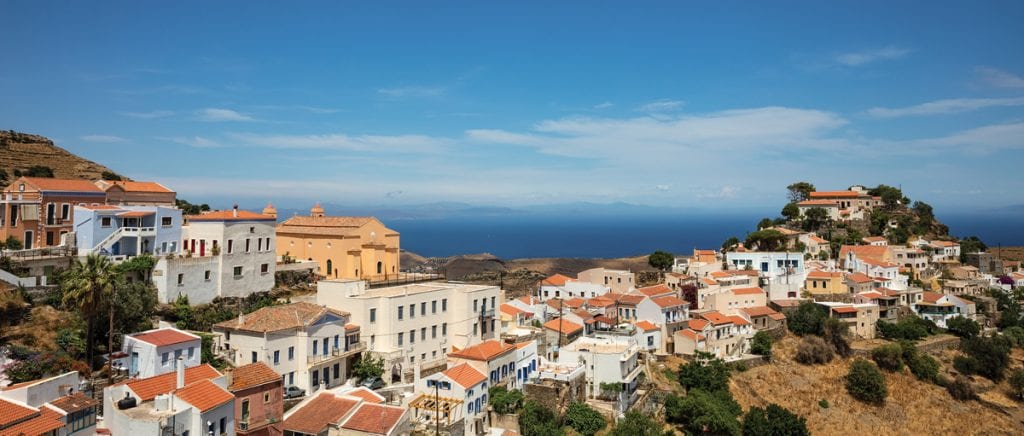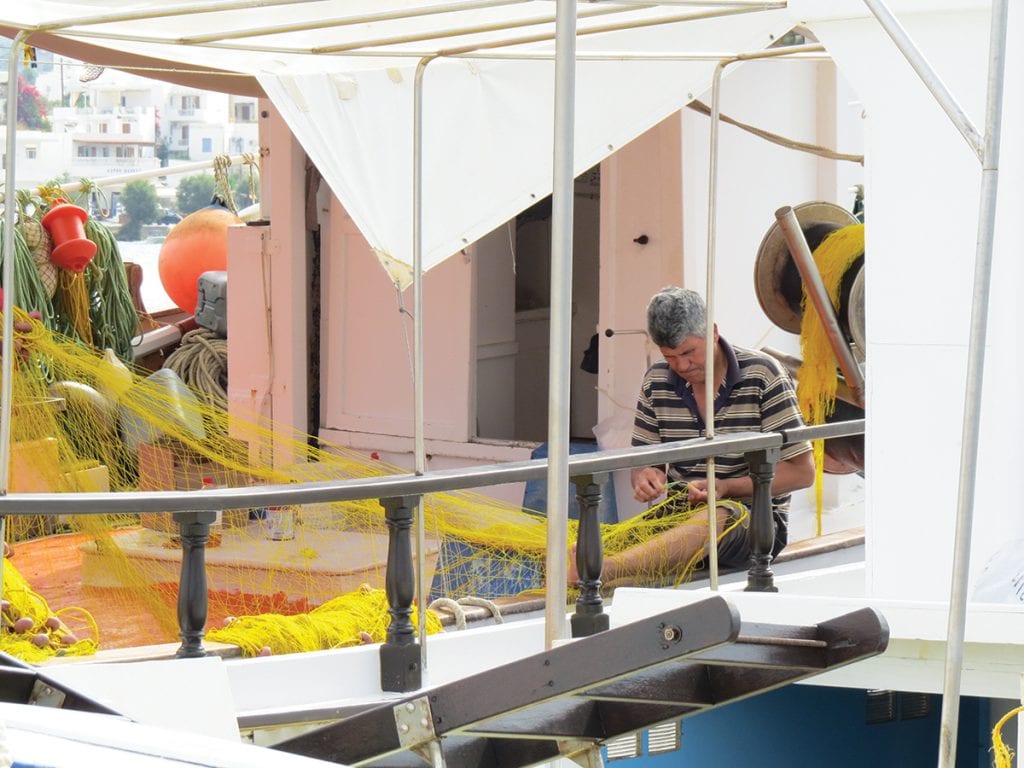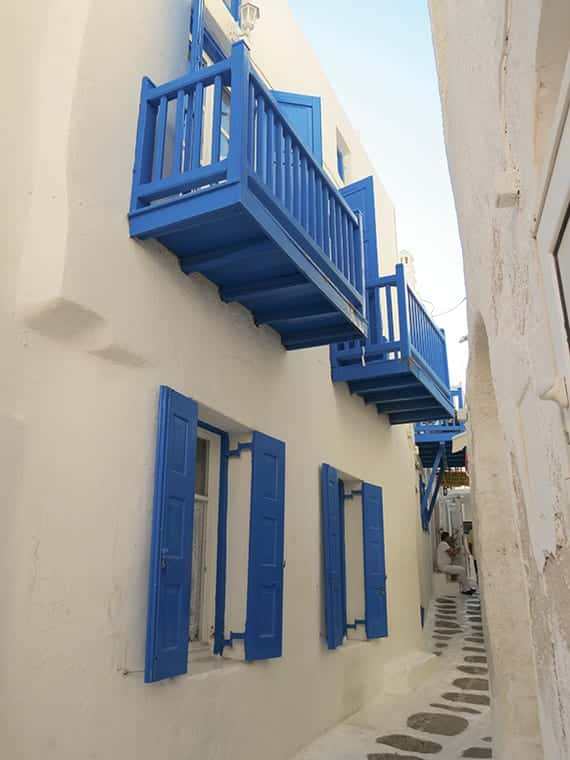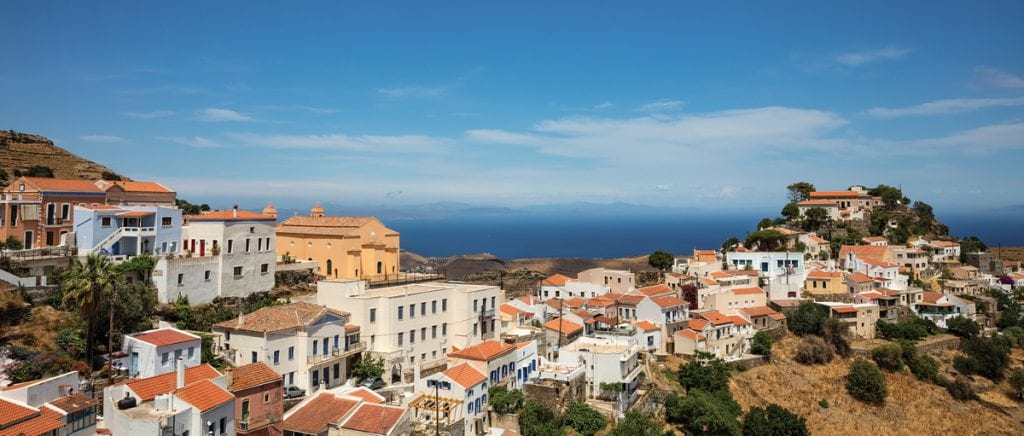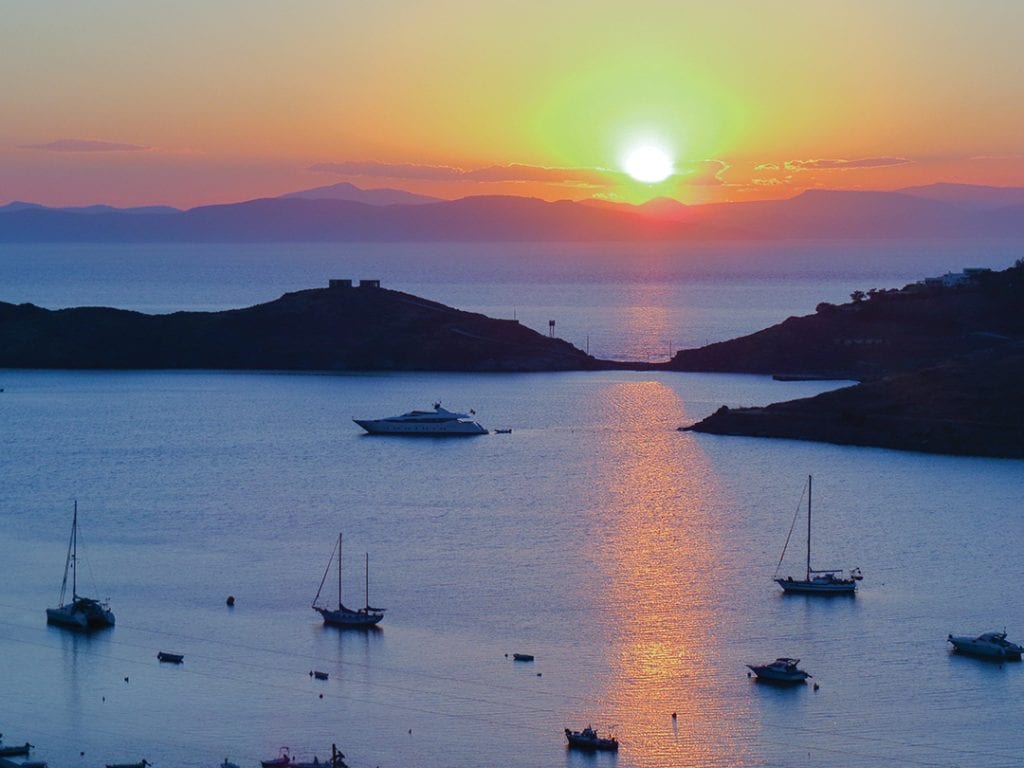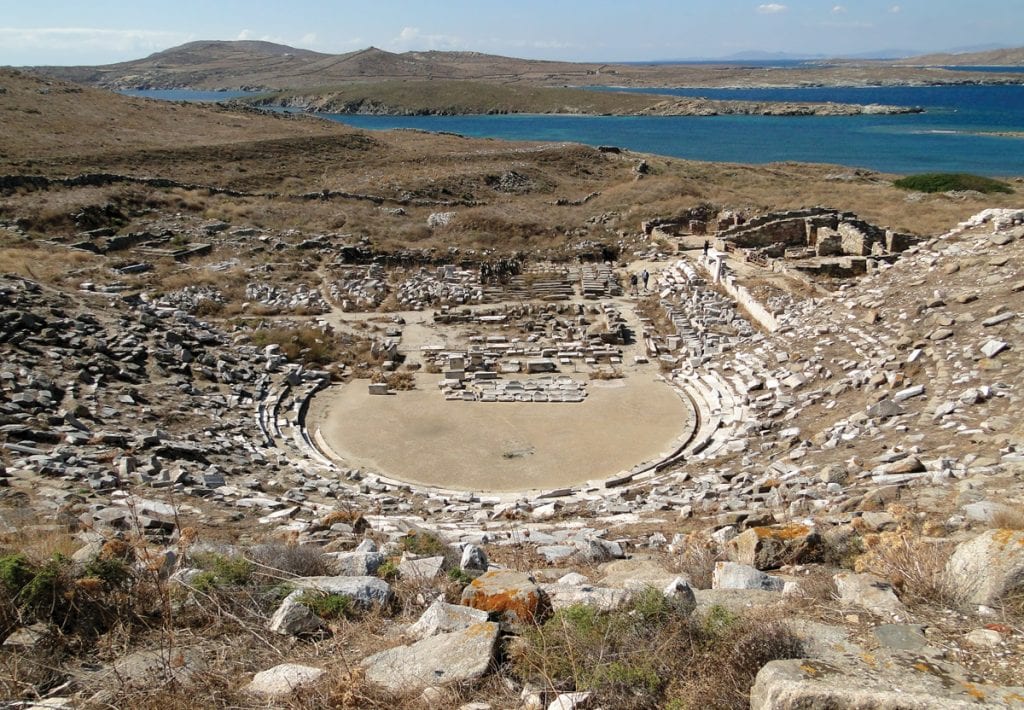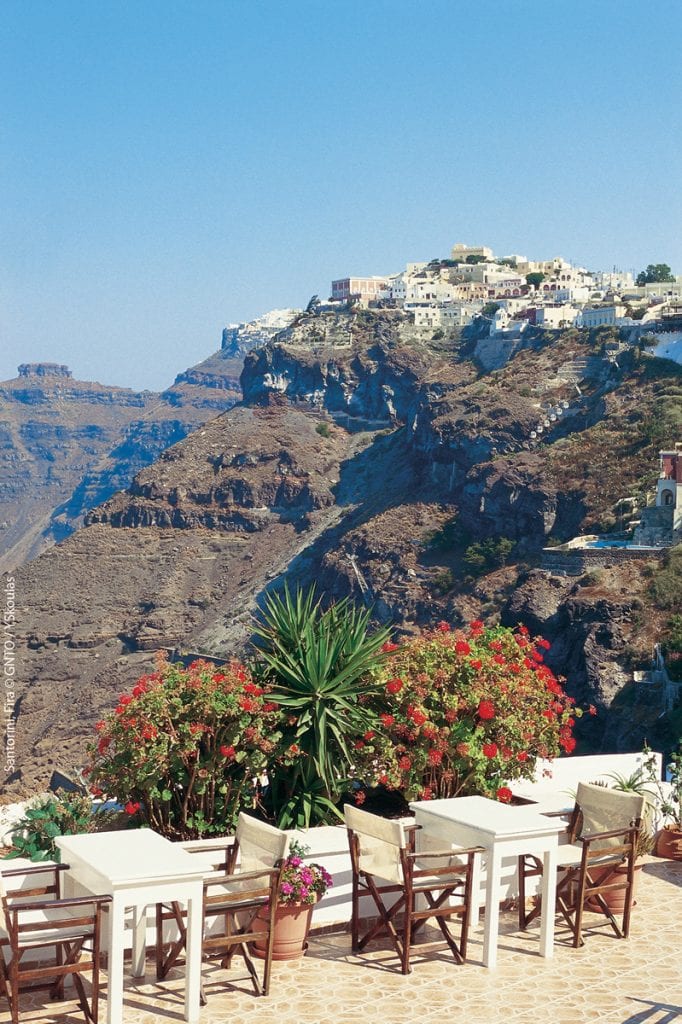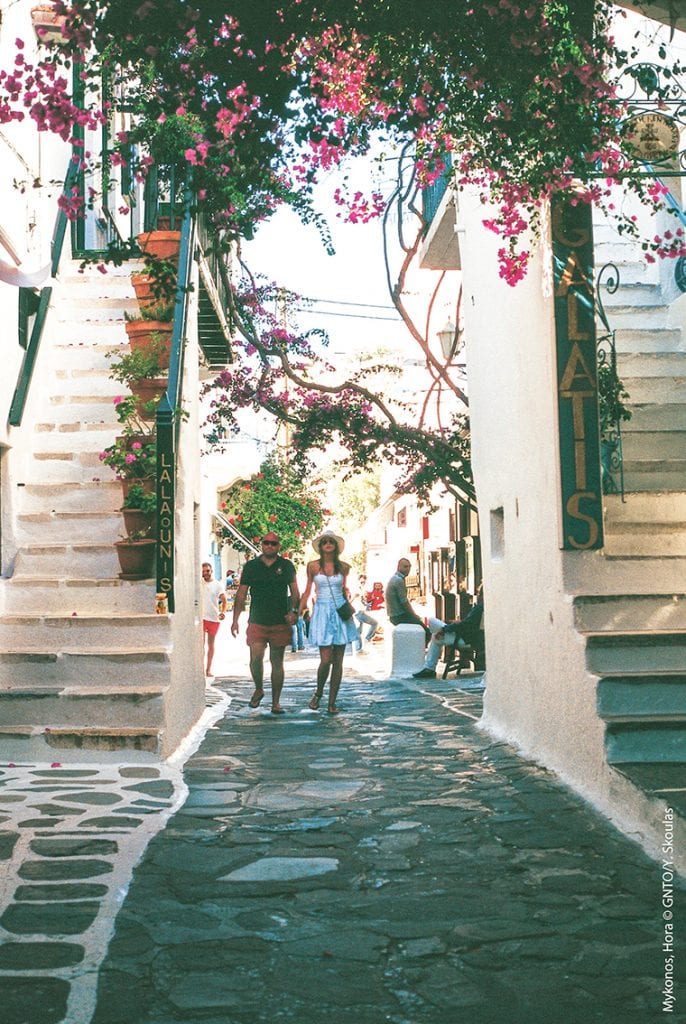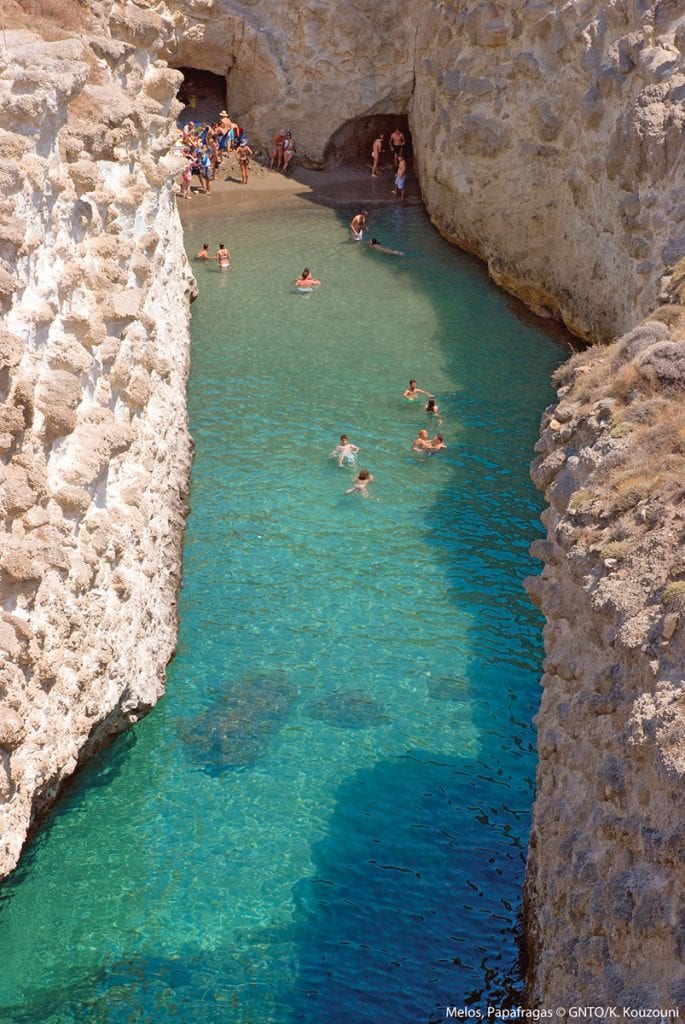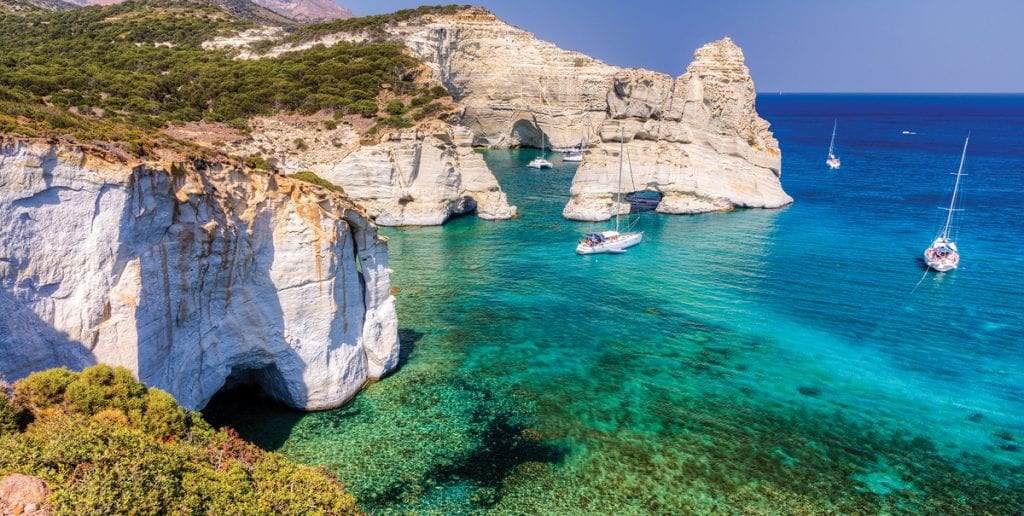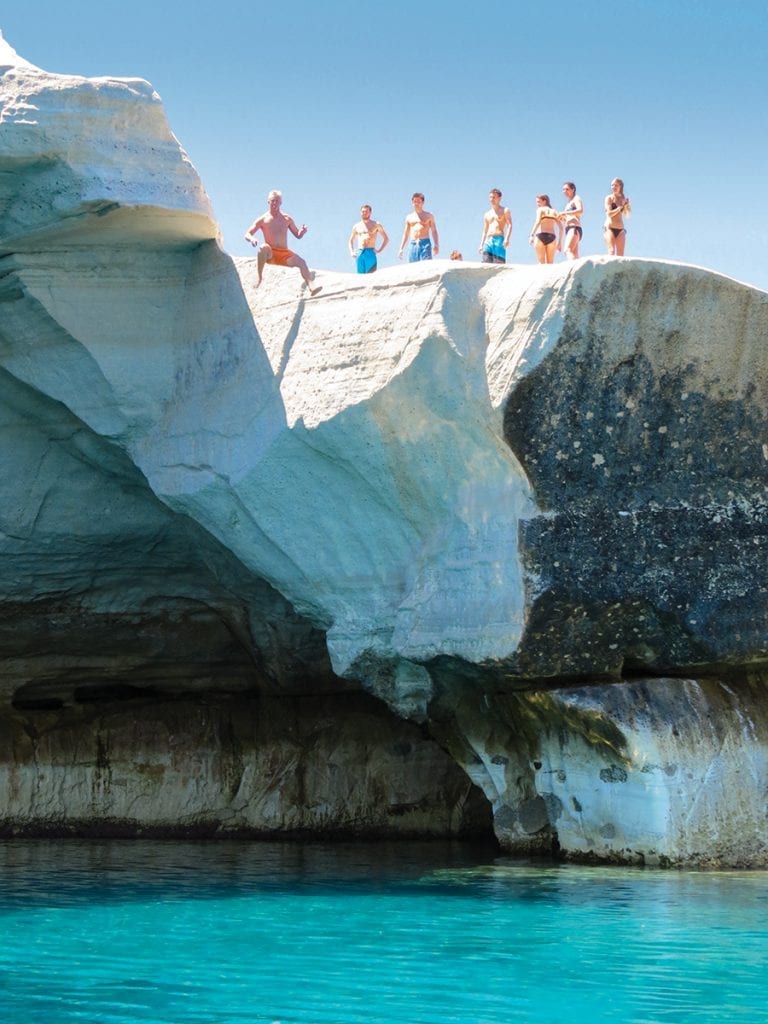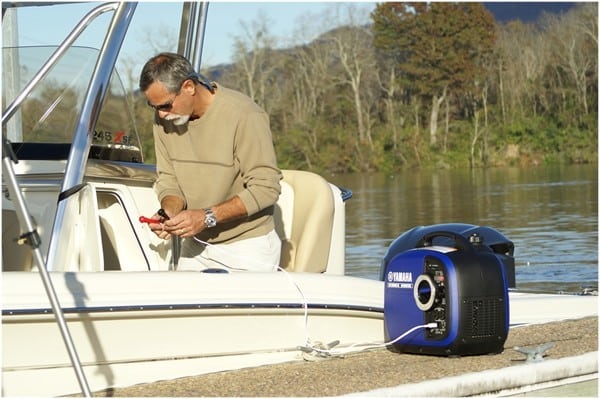Cruising through Greece is like stepping back in time
The charts spread out on the nav desk are intimidating. There’s so much to see in the southern Aegean Sea with more than 200 islands in 1,000 square miles of water. Our challenge is to determine how many places we can explore in just two weeks. We decide to try for a dozen—an ambitious goal given the distances and amount to see and do on the spectacular Cyclades Islands of Greece where, it seems, time has stood still for millennia. Cruising through Greece is an unending pleasure.
Med-Style
We head south out of Lavrion just as the northerly winds pick up. Med mooring (docking a boat end-on as opposed to alongside) in 35 knots teaches us what a treat the Meltemi wind can be. As if it’s not hard enough to reverse into a gap that looks half the needed size, the wicked Greek Meltemi adds to the fun of our arrival at Mykonos Island. We face down some Croatian charterers for the last quay space, tie up and wait for the Meltemi to blow itself out.
Mykonos is where the beautiful people come to party, some on the superyachts that dot the large bay. The island seems to burst out of the sea, spilling chic eateries, artsy galleries, decorated staircases, and classic Greek island architecture in every direction. The town is made up of narrow alleys where tiny restaurants are shoehorned into every corner. Fashion boutiques carry everything from designer dresses to handmade flip-flops that are so beautifully arrayed, it nearly makes a shopper out of even me. Souvlaki (the popular Greek fast food of meat on a skewer) wafts on the breeze that curls around alley corners, and every door is a work of art.
The Meltemi wasn’t letting up so we book ferry tickets to Delos, the neighboring island, all of which is an active archeological dig. There are no tavernas, no discos, no shops, and most importantly, no anchoring, which is why you take a ferry.
Ancient History
Delos is the antithesis to Mykonos. It’s the birthplace of the twin gods Artemis and Apollo and was a hopping place back in 1500-1200 BC. Today, however, it’s a place to contemplate the ages and how even hearty civilizations can disappear. The island’s ancient homes, shops, and temples are amazingly well preserved. We walk along the Terrace of Lions that looks out over the Sacred Lake (drained in 1926 by anthropologists trying to eradicate mosquitos). It’s downright otherworldly. The site steps back a few centuries and you’ll want to dust off memories of high school mythology classes to take it all in. Much of the once-colorful mosaics are left exposed to the elements, which must give museum curators around the world nightmares.
After three days, we dislodge our anchor from an underwater cable and say goodbye to Mykonos just in time to ride the last of the Meltemi to Milos, an island made famous by the discovery of the Venus de Milo, which was unearthed there by a farmer in 1820.
We tie up in the town of Adamas and stroll the circular quay lined with captains hawking the next day’s excursions. They’re all gorgeous, Zorba-the-Greek types and they promise an unforgettable cruise to the western island sites, which are chock-full of caves, rock formations, and sheer cliffs. I walk from one handsome, sunburnt salesman to the next, eye their vessels and learn about the must-see stops.
The Greeks have a bit of a flirtation with the definition of vessel capacity limits, and owners of 45-foot sailboats promise full-day tours “with room for at least 20 people.” We’re seven in 56 feet, and that’s plenty. The highlight of every vendor’s Oscar-worthy presentation is a photo of the amazing lunch that would be served. I pour over their brochures and maps and realize we can do it on our own.
Seclusion for the Win
The next morning, we wait two hours and then follow the tourist boats on their trek to visit the highlights. The delay was a stroke of genius as we arrive at each stop just as the local boats pull anchor to move on, leaving us alone to enjoy the peace and quiet. We dinghy into the topless Sykia cave, which is a treat since no one is there but our own echo. And lunch? Well, our morning’s visit to a small grocery store makes for our own brochure-worthy feast.
Following the trail south, we turn the corner to Kleftiko, an unreal playground ringed with caves and arches that can only be visited by boat and explored by dinghy. There’s no bad place to point the camera, so we lose track of time and decide to stay the night. Protected from the northern wind by steep cliffs, we have the peaceful anchorage to ourselves after all the tourist boats head back to town.
In the morning, we continue on our circumnavigation of Milos and find Sarakiniko Beach. Made up of white sand, tall cliffs and hundreds of caves, the moonscape of Sarakiniko can be visited by land as well as by boat.
Sheer, white cliffs fall into the blue-green water, dotted by pink caves that lure you in for a swim. We have a unique vantage point as we’re the only boat anchored out and are photographed by the visitors deposited on the beach by tourist buses from Adamas.
Jump In
Young guys and gals dare each other to jump off the 60-foot cliffs above, but I opt for a long swim instead and wonder if Odysseus himself may have been lured here by sirens. That afternoon, we circle back to town and find one more space on the quay for another Med moor, this one executed in windless bliss.
Here, the islands and days flow by and too soon, it’s time to head back north, so we scour the charts to find one more island before returning to Athens. We settle on Kea, which turns out to be a great find. A weekend destination for Athenian yachties, Kea is often overlooked by charter boats and that’s a mistake.
The island benefits from frequent rainfall (by Greek standards) so it’s more verdant than the rest of the Cyclades and is covered by row upon row of olive tree terraces and beautiful vineyards; the countryside is more akin to Italy. Like most villages in the Cyclades, Kea’s town of Ioulida is built into a mountainside and practically vertical, which creates unbeatable views and memorable sunsets. We hike to the famous Stone Lion of Kea and its weird and enigmatic smile.
During our somewhat irregular and incomplete circumnavigation of the Cyclades, we learn that there are at least three different ways to spell every island and town name, which makes sailing and driving rental cars interesting. The old town on every island is called Hora or Chora, which doesn’t help. Greek names are a mystery, even when written in an alphabet we could recognize. In the native language, it’s quite literally, all Greek to us.
We visit seven of the thirty islands and barely scratch the surface of all there is to see. Our choice of anchorages often involves keeping a distance from the thumping discos that, in Greece, can go on until dawn. Otherwise, we were immersed in the history that we can’t even ponder on this side of the Atlantic, and we revel in the natural beauty of the water, the beaches, the countryside, and the people. Friendly and helpful, the villagers outside the main towns are genuinely unfazed by tourism. They just go about their lives, less hurried and harried, and only the advertising of free Wi-Fi in every taverna suggests that it’s not 1200 BC.
Cruiser Resources
- May through July and again September through October are good times to charter in the Mediterranean but beware of August when all of Europe is on vacation.
- The Moorings has a selection of powercats for charter from 43 to 51 feet. You can cover a lot of territory at 15 knots, but fuel is expensive.
- Provisioning is excellent and affordable everywhere and the restaurants and tavernas are not to be missed. Greece is one of those places where you can go food shopping every day, so keep things fresh by buying small quantities at a time.
By Zuzana Prochazka, Southern Boating October 2018
Photos courtesy of Zuzana Prochazka, The Greek National Tourism Organisation, and Lefteris Papulakis


